Between Panel and Page
The last time I had this book in my hands was when I was painting my panels. The yellow Post-it Notes are still there by the specimens I originally marked, and the gradient discolouring of the soft pages is clearly visible from the corners inwards. The pages are filled with intriguing handwriting specimens, some of which are almost completely illegible. The specimens include many signatures, a line or two of writing, initials or even a scribble of some sort, all accompanied by captions. This is a first edition, from 1929, wrapped in glassine, without trimming. The book’s edges are a darkish brown that gradually becomes sandier-coloured towards the middle. Flipping through the 368-page book of some six hundred specimens, I remember how I originally discovered ABC de la Graphologie, a French publication that has seen countless reprints, in the library of the Jan van Eyck Academy in 2006, and how years later, I ordered it from a bookseller in France for €25, a price still pencilled in the upper right-hand corner of the title page. The bookseller had attached a note wishing me fun with it.
It was a specific page at the beginning of the book that had initially caught my interest. The page was laid out in such a way that four or five illustrations were stacked one above the other, each with a brief explanation. These pointed to how external situations can influence the act of writing. The first figure is captioned: ‘Accident of the pen. Need to sneeze.’ The remaining figures point to other peculiar circumstances that might disrupt the act of writing, as in ‘The force of the pen scratching the paper’ or ‘A piece of bread on the paper,’ followed by the endearing example of ‘My little girl is pulling my sleeve.’ I really cannot decipher the quirky specimens of handwriting but for a few words like ‘Ce, non, quand, j’ai, vous, en.’ Some captions are more formal: ‘Vertical gesticulation. Older lady.’ Or just ’Austere and proud.’ I might also add that the accompanying captions, which are not entirely untrue, suggest some humorous situations.
I consider the possibilities of abstracting writing by way of painting, and how writing loses its real meaning by being reduced to a gesture, and how this gesture can be informed by a situation.
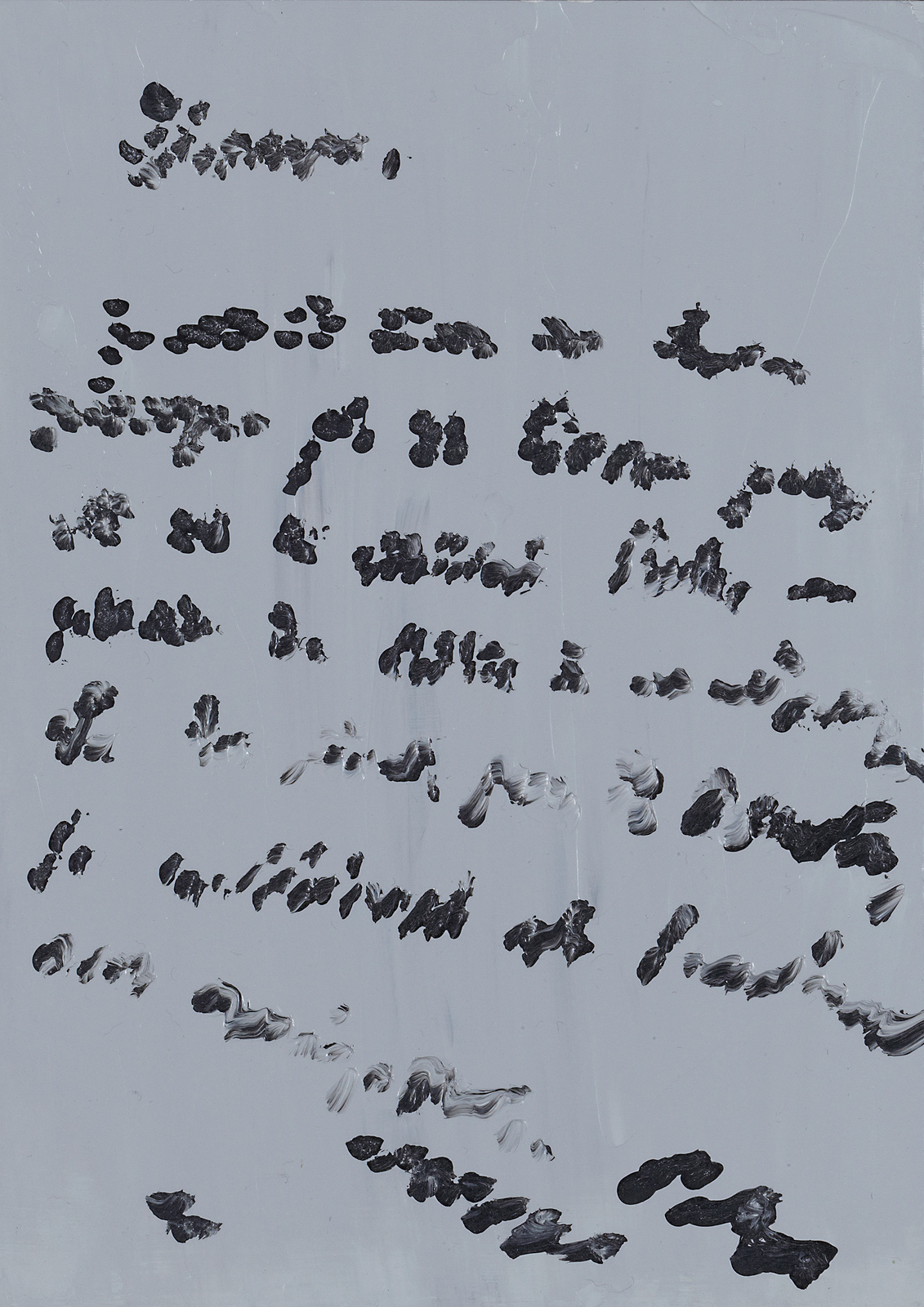 Panel No. 31
Panel No. 31
|
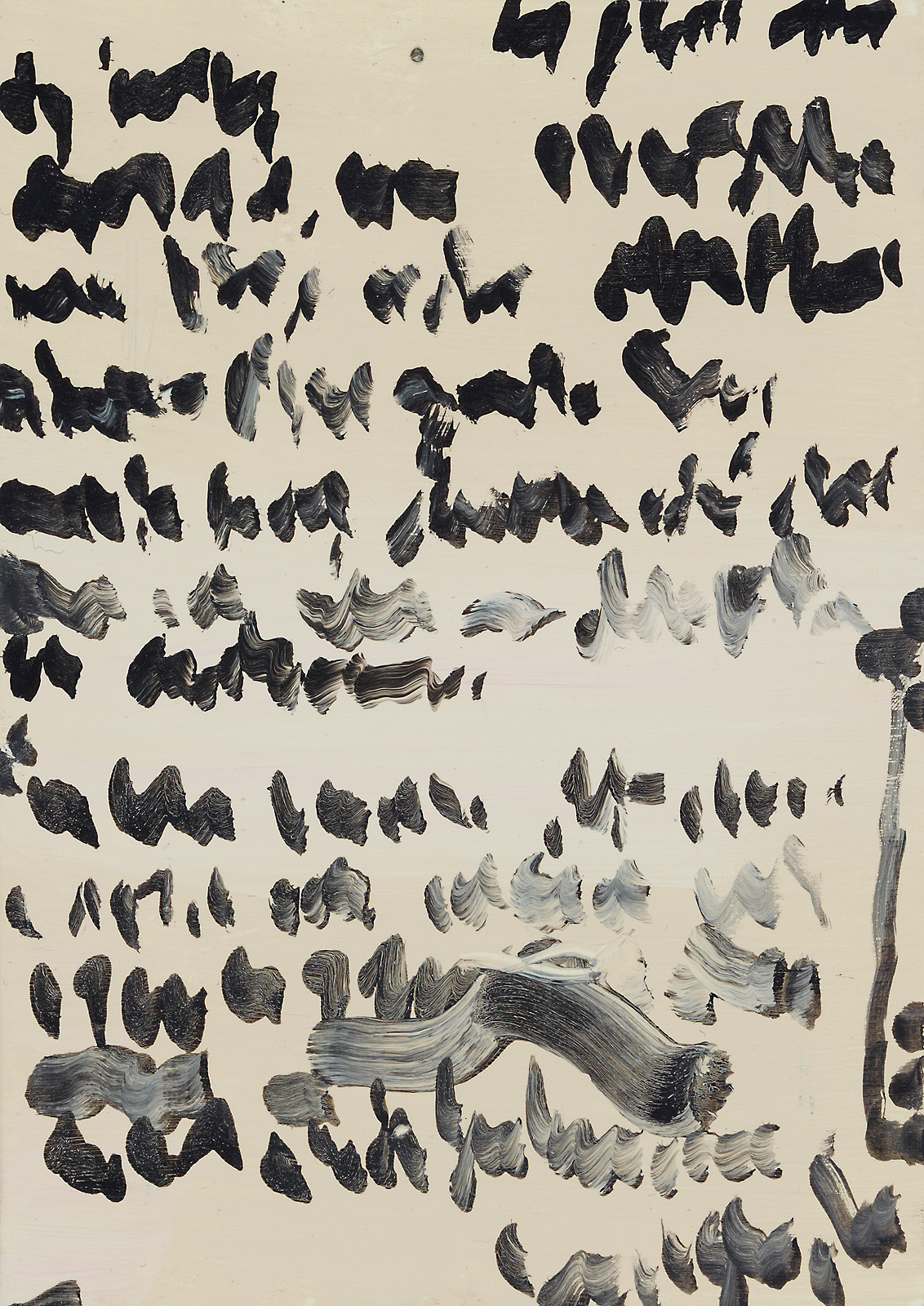 Panel No. 41
Panel No. 41
|
I come to a handwritten letter, or what looks like a letter. It has been simply jotted out over a background. It is similar to the quick handwriting on the backs of postcards which is squished and often tends downwards. The writing plunges partly off the edge at an angle. The black ink had dried up towards the end. I flip further through the book and remember a handwritten letter from overseas where the hand slipped in the midst of writing a large signature with a fountain pen.
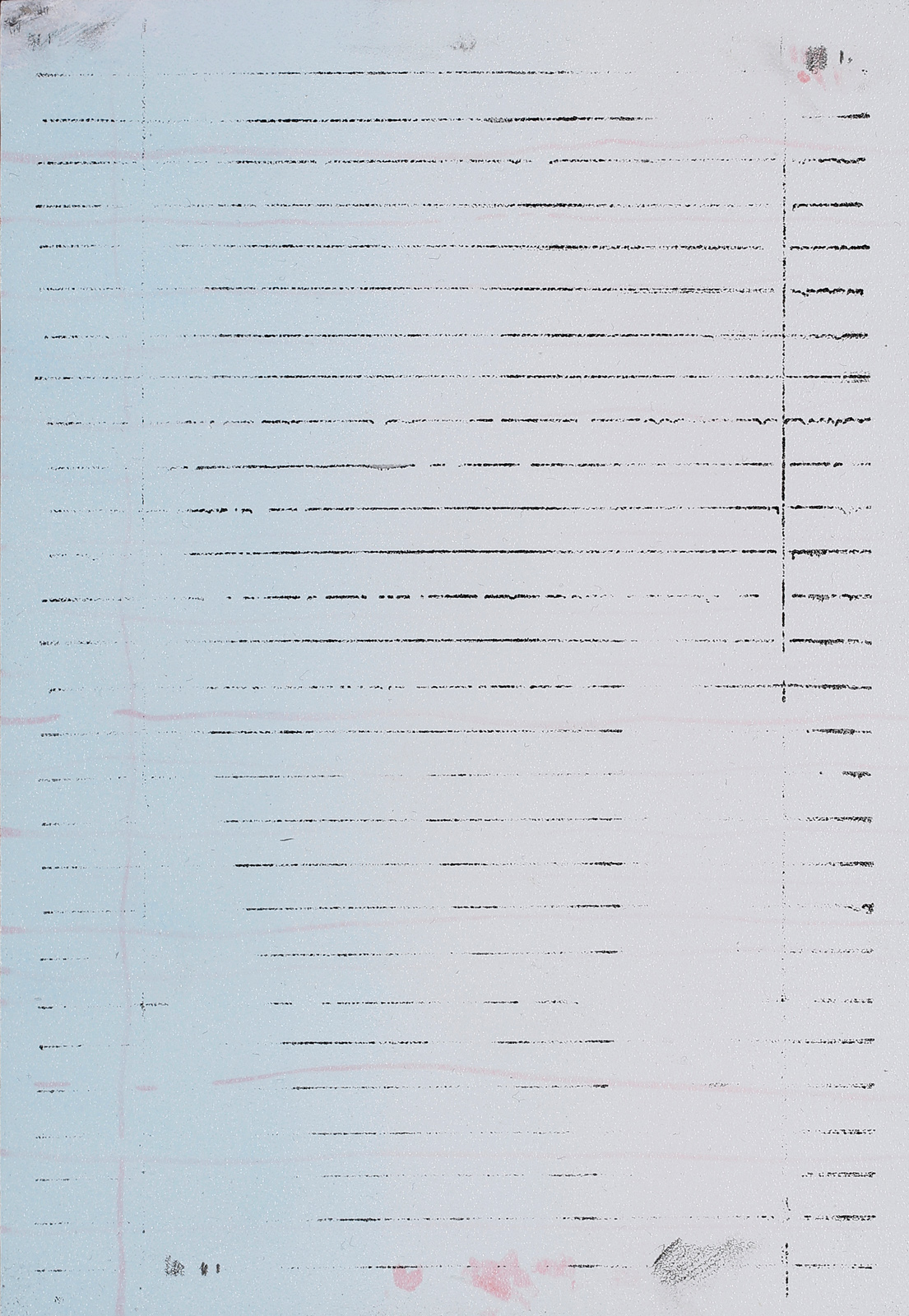 Panel No. 45
Panel No. 45
|
 Panel No. 42
Panel No. 42
|
The discoloured background of the book’s pages is darker on the left and fades out vertically across to the edge. On top of the background is a ruled notebook page – but smaller, reduced to an A5. Not all the lines are visible. A similar design of lines shimmers through from the bottom layer but is somehow different. The lined notebook page is repeated in both layers, each being mechanical or organic. The upper layer is in black and the lower in red. There are 31 horizontal lines and one vertical line off to the right. Test markings and pencil shadings on the top and bottom. This is an unfortunate example. The strokes are short and the handwriting far from legible. Upon closer look, they resemble soft figures lined up one after the other. I notice what could be the word ‘Burn’ and am immediately reminded of the circular burn marks I saw on the streets of Forest Gate. It is finished off with a calligraphic swoosh. I decide to put the book back on the shelf and walk over to the finished panels in my studio drawer.
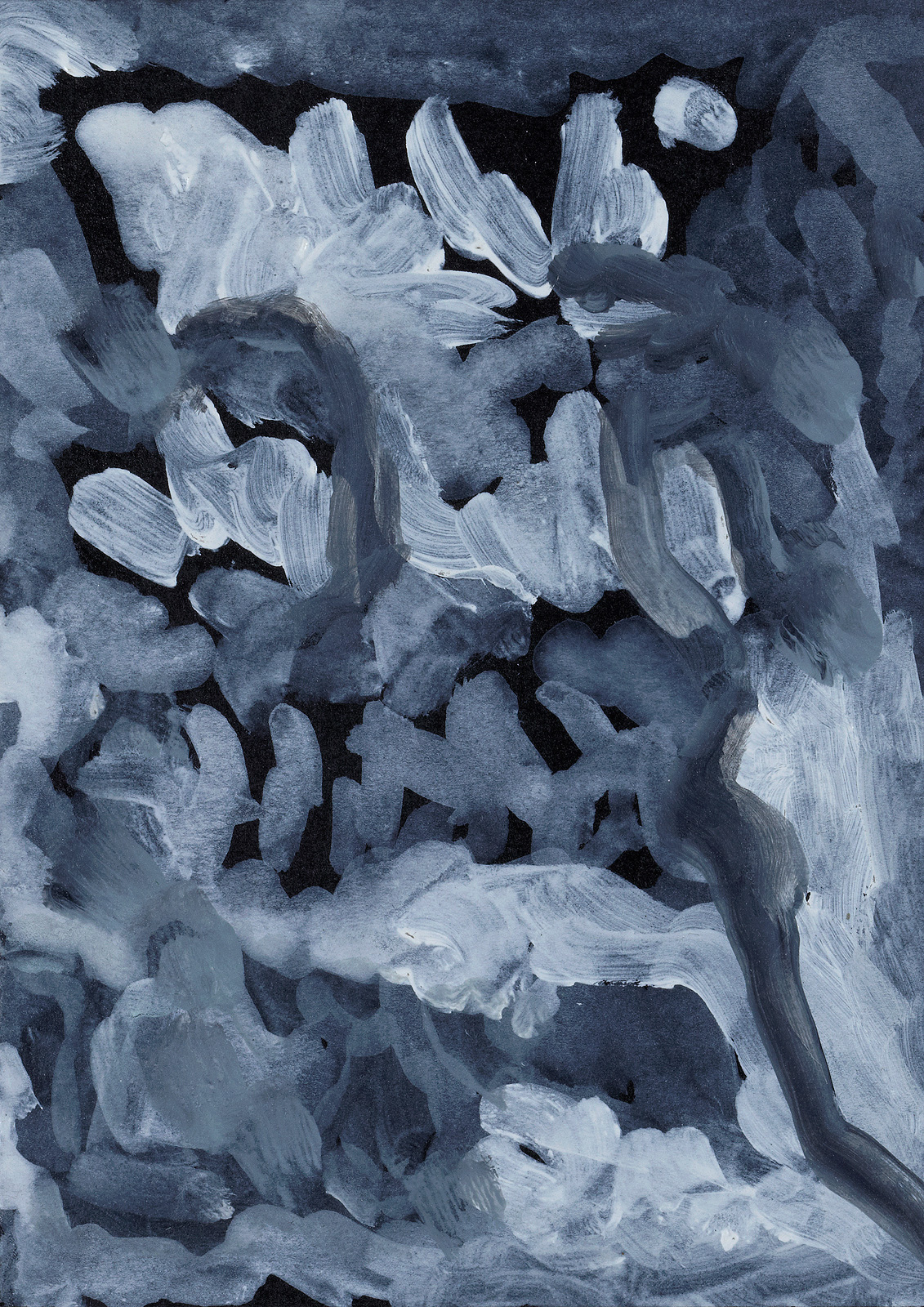 Panel No. 33
Panel No. 33
|
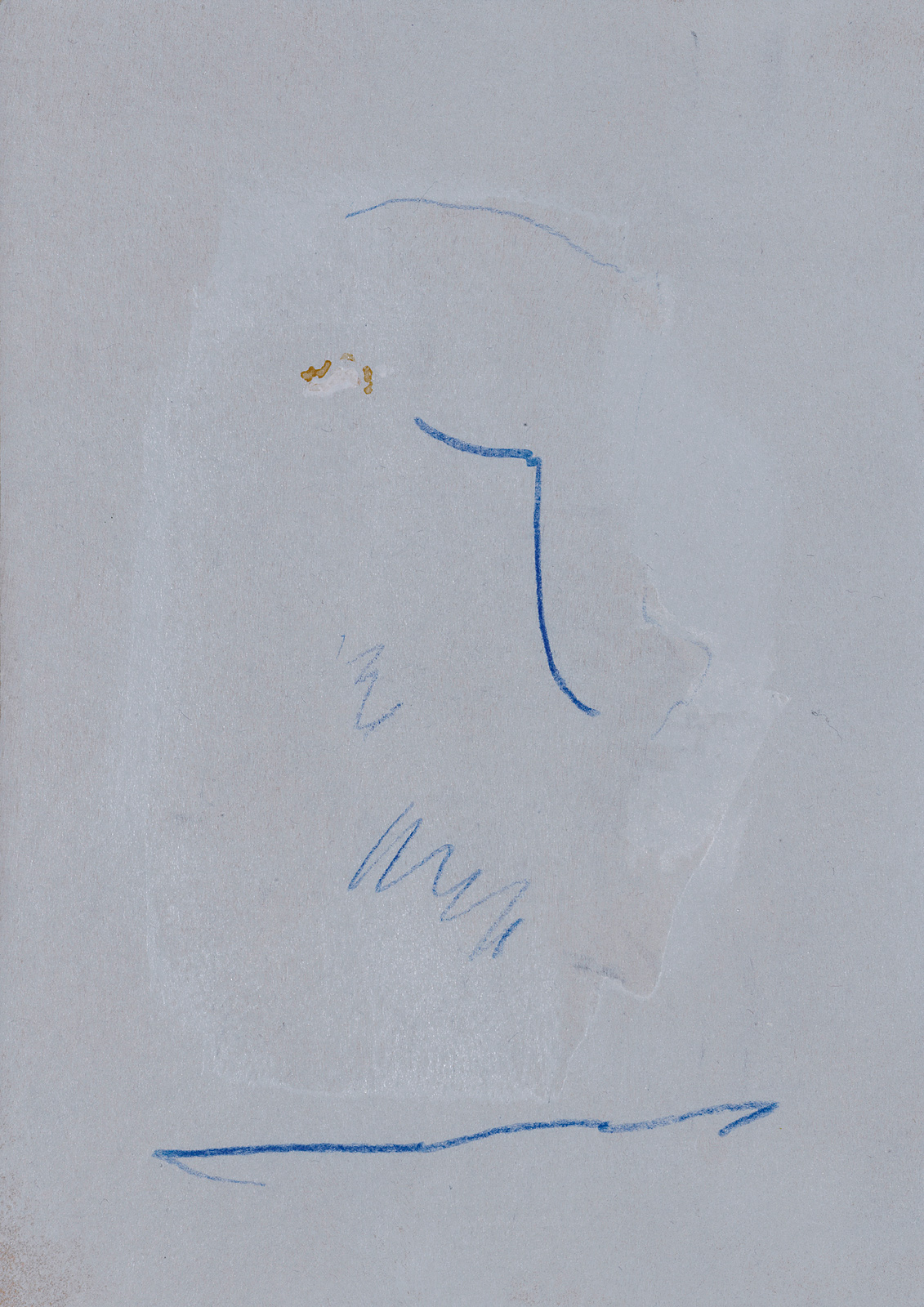 Panel No. 46
Panel No. 46
|
The whitish strokes dissolve into a greyish fluid on the black background. Is it handwriting? A landscape or a rock formation? Blue pencil drawing on grey background. The profile of a person?
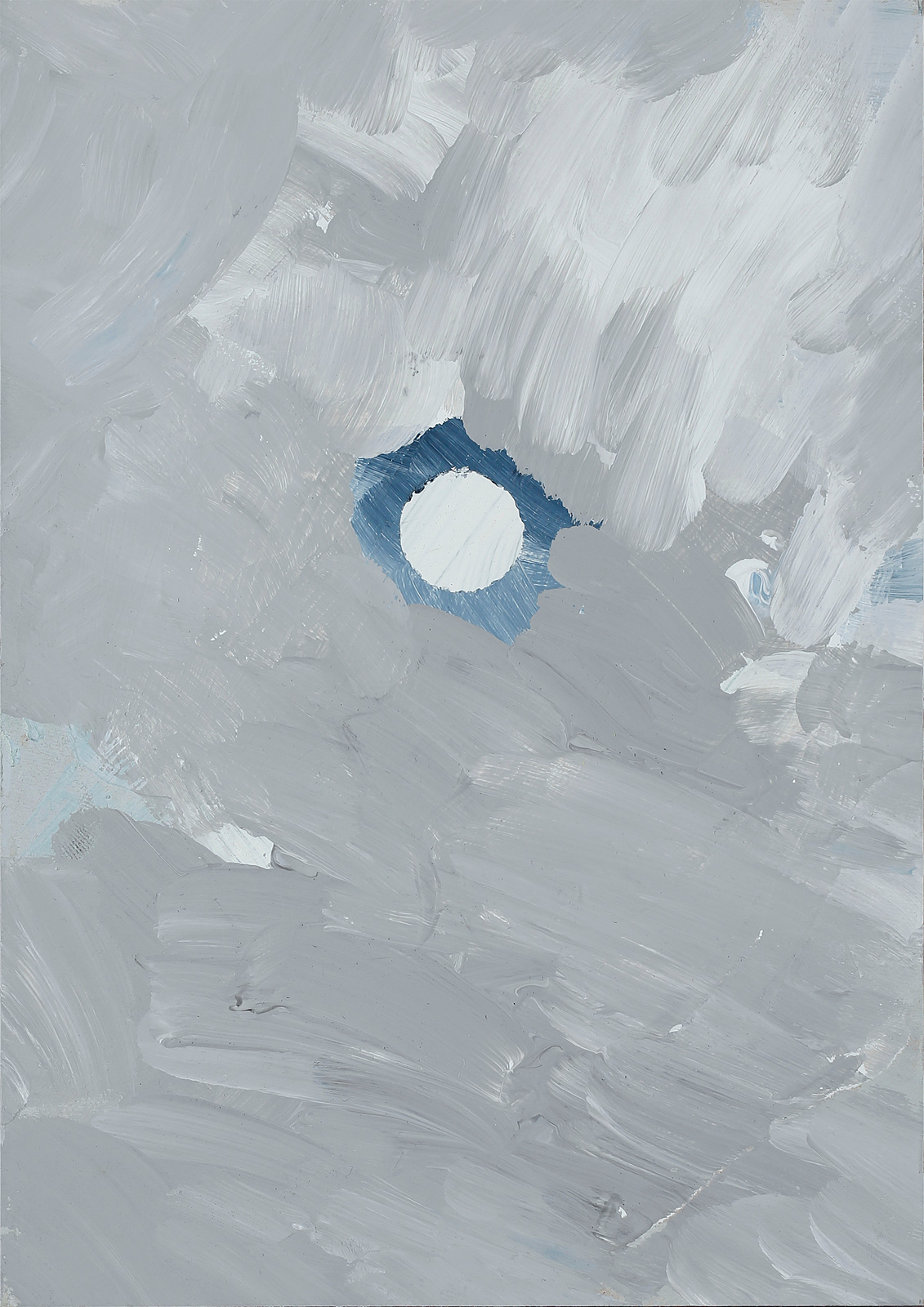 Panel No. 04
Panel No. 04
|
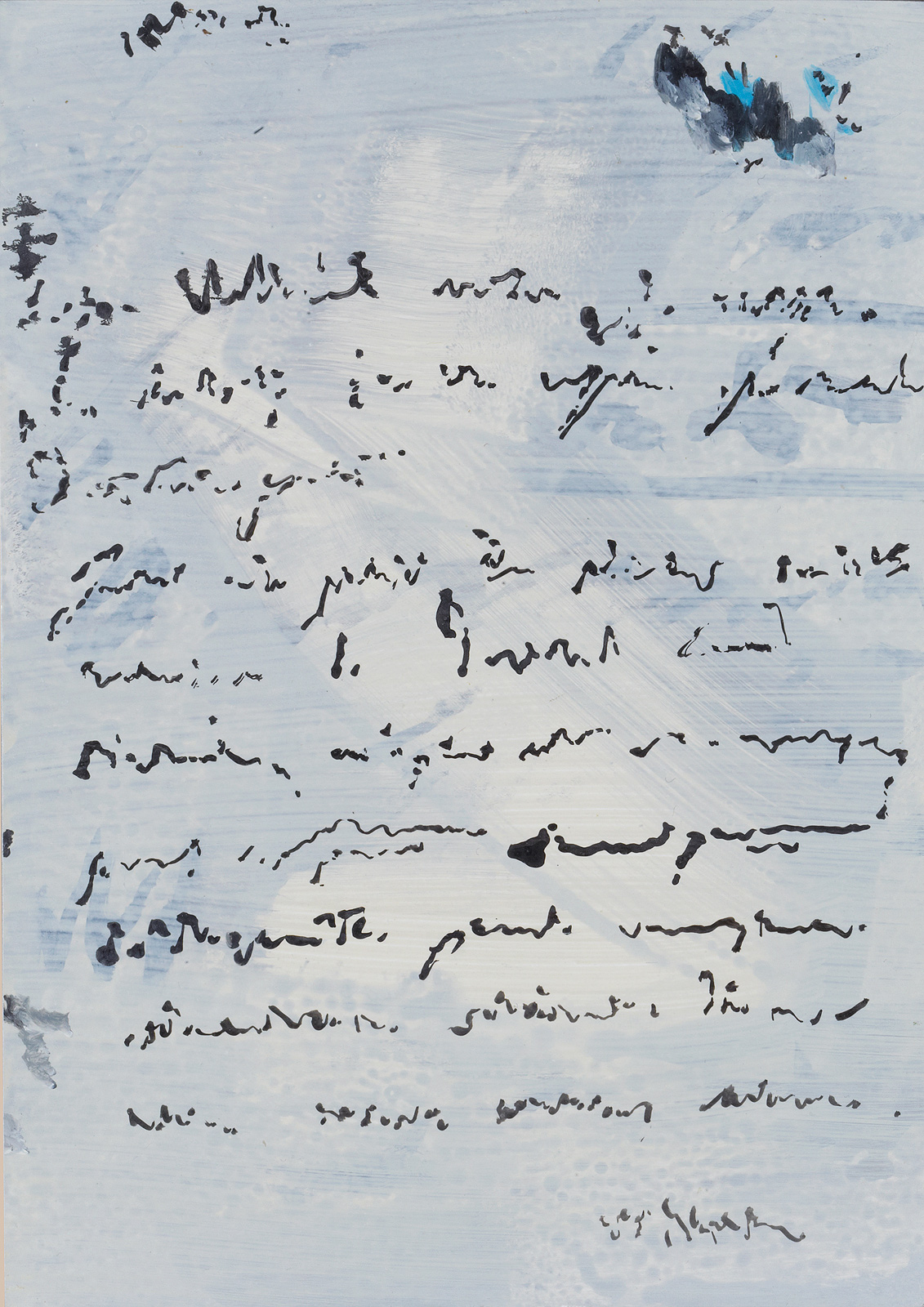 Panel No. 36
Panel No. 36
|
Above, a row to the right, the form of a circle or dot stenciled out over a window comes to mind. I discover another panel which has a palimpsest quality to it. Yet, the background differs from a plain-coloured parchment. This parchment reveals smudges and horizontal strokes of black ink, along with a large wiping gesture. The writing on top records the gesticulation of writing, not anything but movement. It is a voiceless imitation. Seen from the perspective of the alphabet, the figures might be formless scribbles. First a dabbing, then a breaking off; a pause, a slow moving of the brush across the panel, all followed by horizontal lines which continue for another centimetre. Nothing is underlined.
 Panel No. 38
Panel No. 38
|
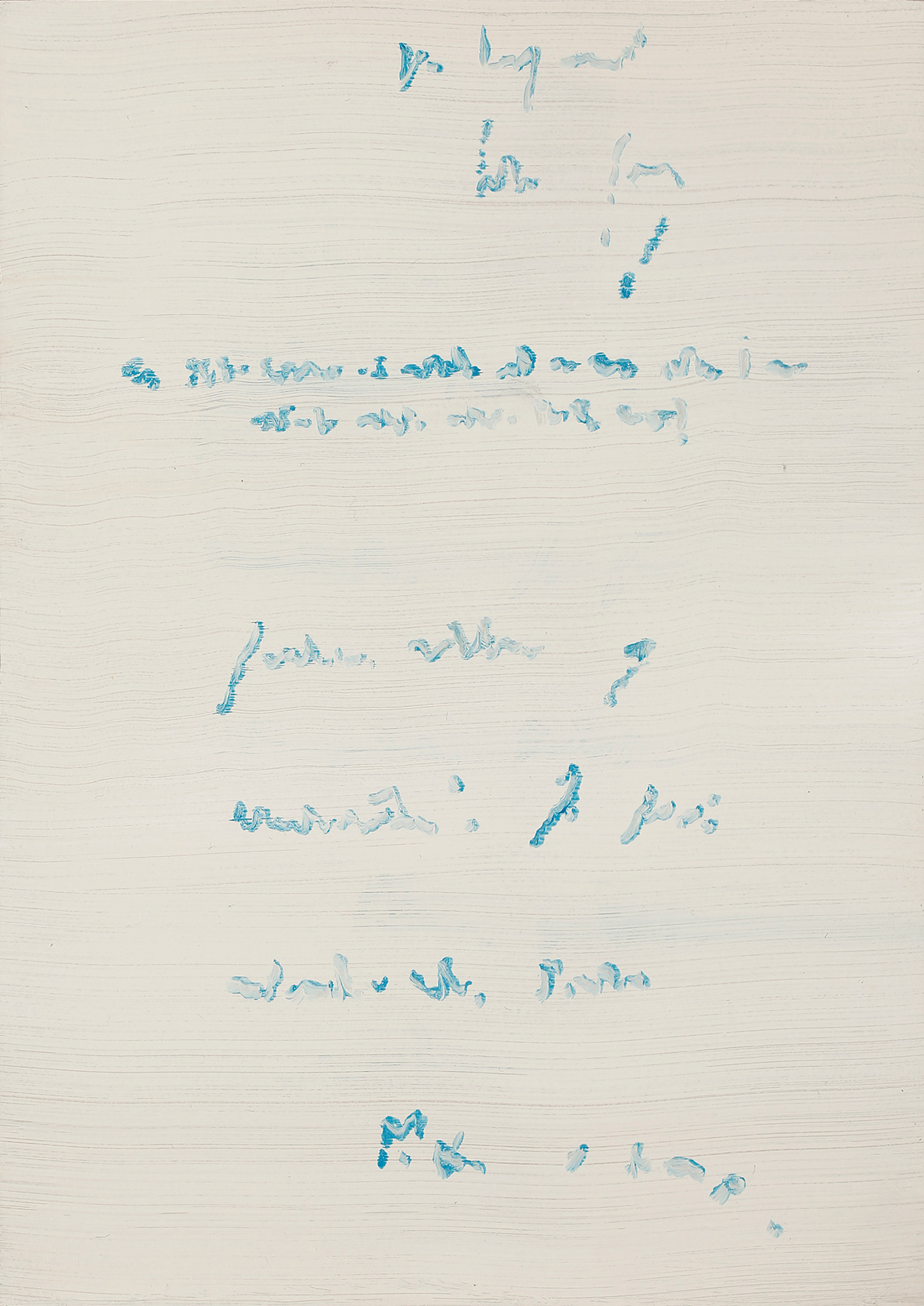 Panel No. 34
Panel No. 34
|
A pink-to-white-to-pink gradient, with short, jagged, abrupt vertical strokes divided into two blocks. The strokes contain no typographic forms like bowls or counters. The two blocks are centred; the upper one is denser and shorter, whereas the lower one could be grass of some sort. Another page based on the book. Beneath the surface, a second layer shines through. The writing on the top seems small and spaced out; this is supported by smaller writing underneath. What about calling it ‘An inoperative shorthand’. The impression is unbalanced; vertical strokes are exaggerated.
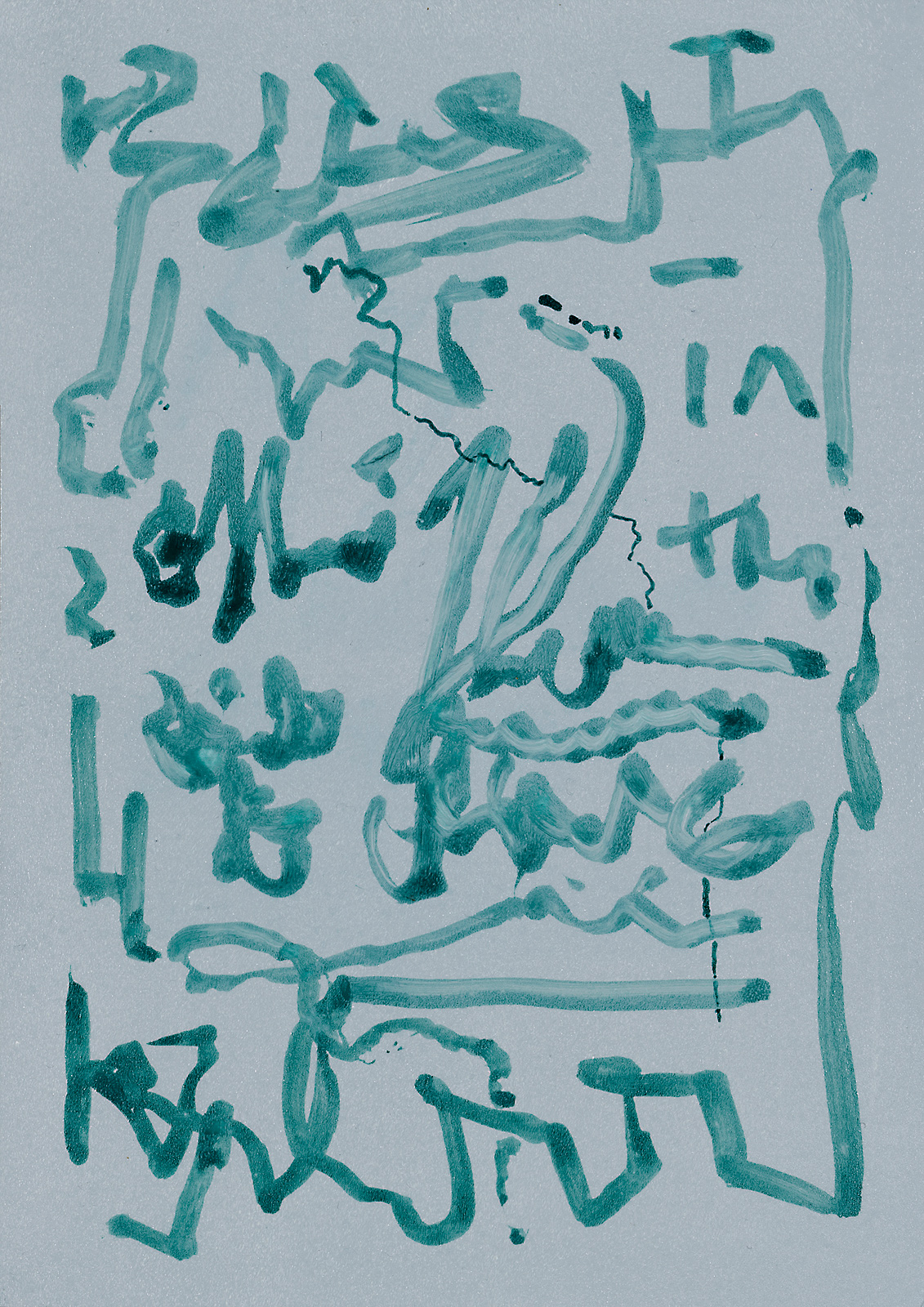 Panel No. 47
Panel No. 47
|
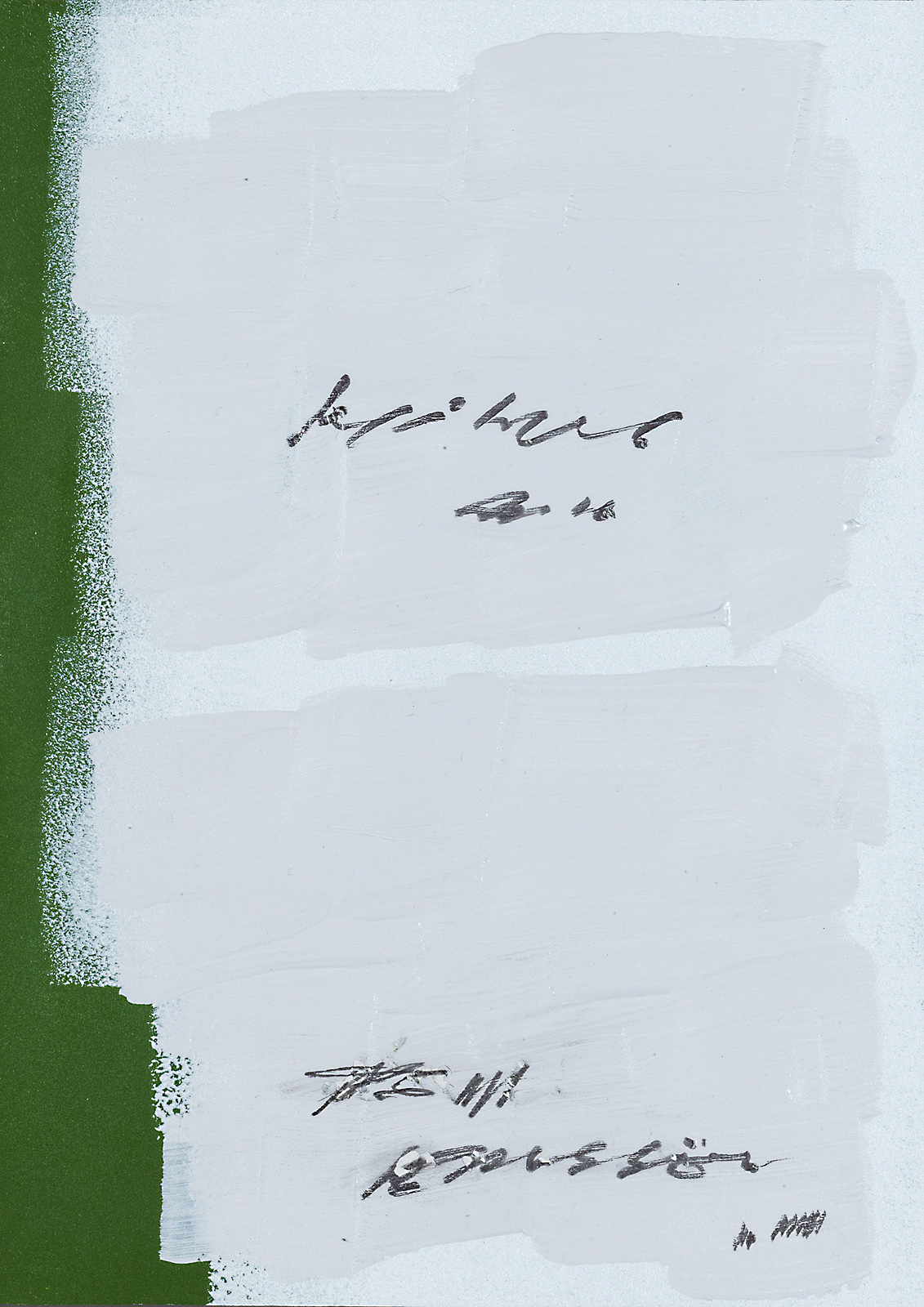 Panel No. 40
Panel No. 40
|
This one could resemble a line of travel(?). On the metro, I had taken note of a wooden wall hiding a construction site. The wall had been green but partly overpainted with white in two sections (sloppily, I might add!), so that the white was rolled out over the green but did not entirely cover the left edge. On top of the green, which had probably been done by another contractor, another layer of grey had been added with large brushstrokes, which left the left border of the green visible. Then, tags on top – obscure and energetic squiggles. At the bottom edge of the grey paint, I can make out the name ‘Russël’ or ‘Brussel’!